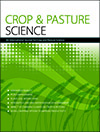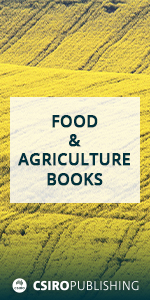This study investigates the effects of low temperatures on fatty acid metabolism in diploid and tetraploid annual ryegrass. Through qRT-PCR analyses, it shows significant changes in fatty acid profiles and the expression of key genes (ACACAα, MACPT, DESAT5), highlighting genotype-specific responses. The findings provide insights into cold adaptation mechanisms and offer potential targets for breeding climate-resilient forage crops.

Crop & Pasture Science
Volume 76 Number 8 2025
Pasture legumes and forbs have been identified as a potential avenue to reduce enteric methane emissions and improve pasture systems, but climate change could affect this. This study quantified the effects of elevated temperatures and reduced rainfall on nutritional quality and in vitro methane production, showing altered methane production across multiple species, aligned with changes in nutritional quality and overall gas production. This highlights the significant effects climate change could have on methane mitigation measures on the basis of novel forage species.
This article belongs to the collection: Australian Grasslands Symposium 2025 ‘Seeds of Change’.
CP24374 Abstract | CP24374 Full Text | CP24374PDF (1.3 MB) | CP24374Supplementary Material (654 KB) Open Access Article
CP25059_COCorrigendum to: Commentary on four publications testing the effectiveness of biostimulant products on pasture recovery from pasture dieback: an agronomy viewpoint
CP25059_CO Full Text | CP25059_COPDF (110 KB) Open Access Article
Inappropriate crop rotation, reduced use of manures, and overuse of chemical fertilisers are important reasons for depletion of soil organic carbon (SOC). For soil health to be sustained, the restoration of SOC balance through adaptive soil–crop management techniques is required. This study provides information on how the modified rice–mustard–jute agrosystem contributes most to improving SOC within the cropping system at both the crop rotation and intercropping scales and to what extent an integrated soil–crop management practice improves SOC in climate variability scenarios.
Researchers suggest that the conditions inherent to the implementation stage of a soybean crop can influence ~50–60% of its production potential. Plant arrangement is one of the management strategies that is defined at this stage. Plants distributed more equidistantly find a production environment favourable to their growth, avoiding unnecessary energy expenditure owing to intraspecific competition, which will reflect in greater grain productivity.




